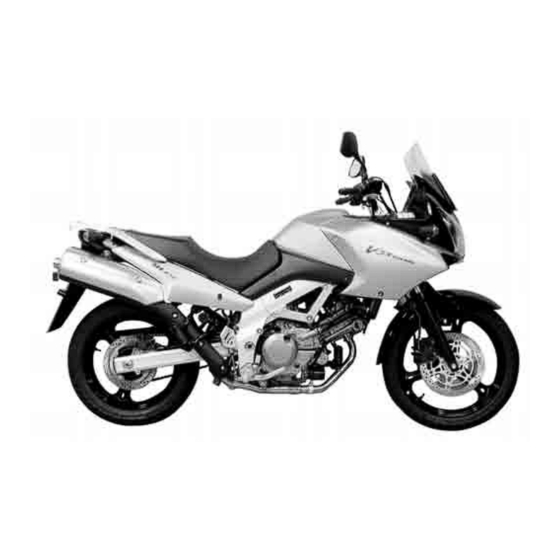
Table of Contents
Advertisement
Quick Links
FOREWORD
This manual contains an introductory description on
the SUZUKI DL650 and procedures for its inspec-
tion/service and overhaul of its main components.
Other information considered as generally known is
not included.
Read the GENERAL INFORMATION section to
familiarize yourself with the motorcycle and its main-
tenance. Use this section as well as other sections
to use as a guide for proper inspection and service.
This manual will help you know the motorcycle bet-
ter so that you can assure your customers of fast
and reliable service.
* This manual has been prepared on the basis
of the latest specifications at the time of publi-
cation. If modifications have been made since
then, differences may exist between the con-
tent of this manual and the actual motorcycle.
* Illustrations in this manual are used to show
the basic principles of operation and work
procedures. They may not represent the
actual motorcycle exactly in detail.
* This manual is written for persons who have
enough knowledge, skills and tools, including
special tools, for servicing SUZUKI motorcy-
cles. If you do not have the proper knowledge
and tools, ask your authorized SUZUKI
motorcycle dealer to help you.
Inexperienced mechanics or mechanics
without the proper tools and equipment
may not be able to properly perform the
services described in this manual.
Improper repair may result in injury to the
mechanic and may render the motorcycle
unsafe for the rider and passenger.
© COPYRIGHT SUZUKI MOTOR CORPORATION 2003
GROUP INDEX
GENERAL INFORMATION
PERIODIC MAINTENANCE
ENGINE
FI SYSTEM DIAGNOSIS
FUEL SYSTEM AND THROTTLE
BODY
COOLING AND LUBRICATION
SYSTEM
CHASSIS
ELECTRICAL SYSTEM
SERVICING INFORMATION
EMISSION CONTROL
INFORMATION
1
2
3
4
5
6
7
8
9
10
99500-36135-03E
Advertisement
Chapters
Table of Contents
Troubleshooting














Need help?
Do you have a question about the DL650K5 and is the answer not in the manual?
Questions and answers